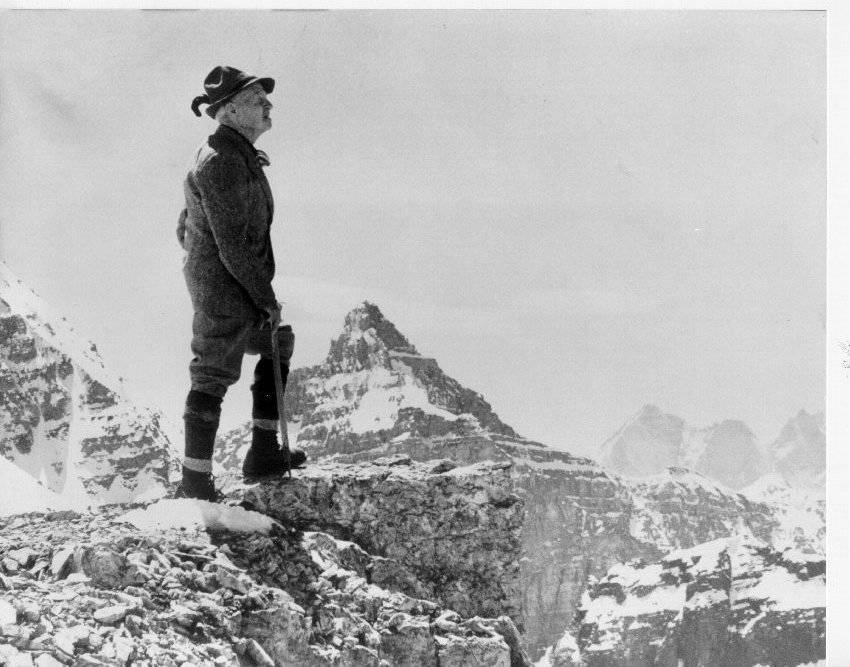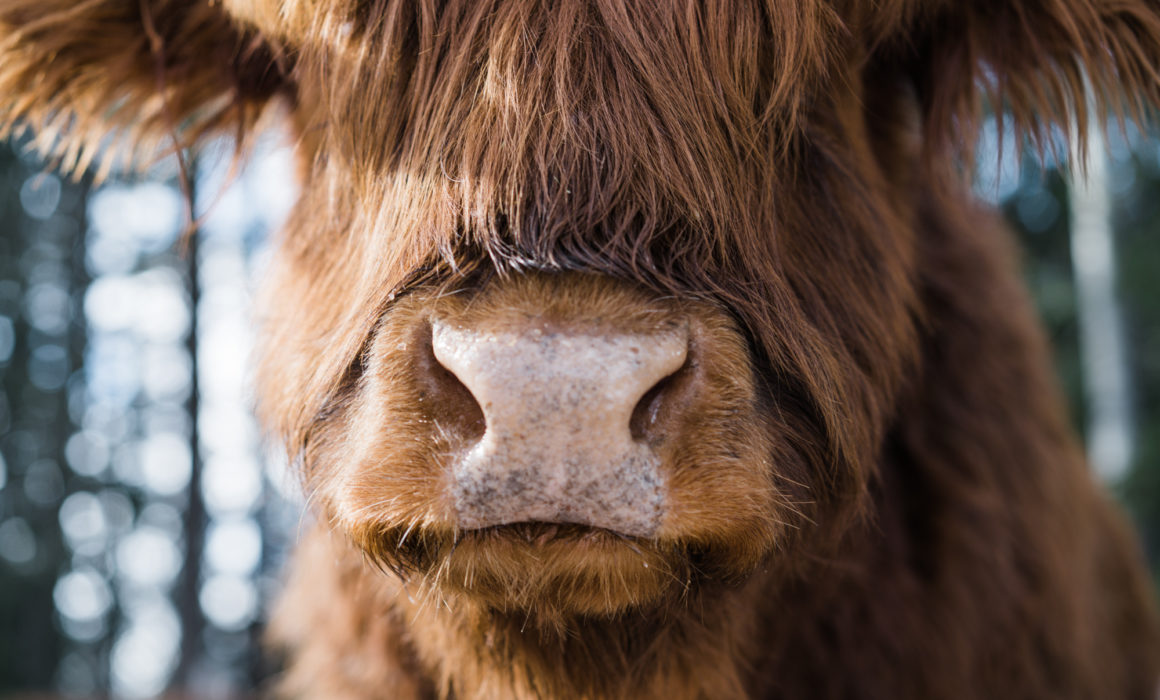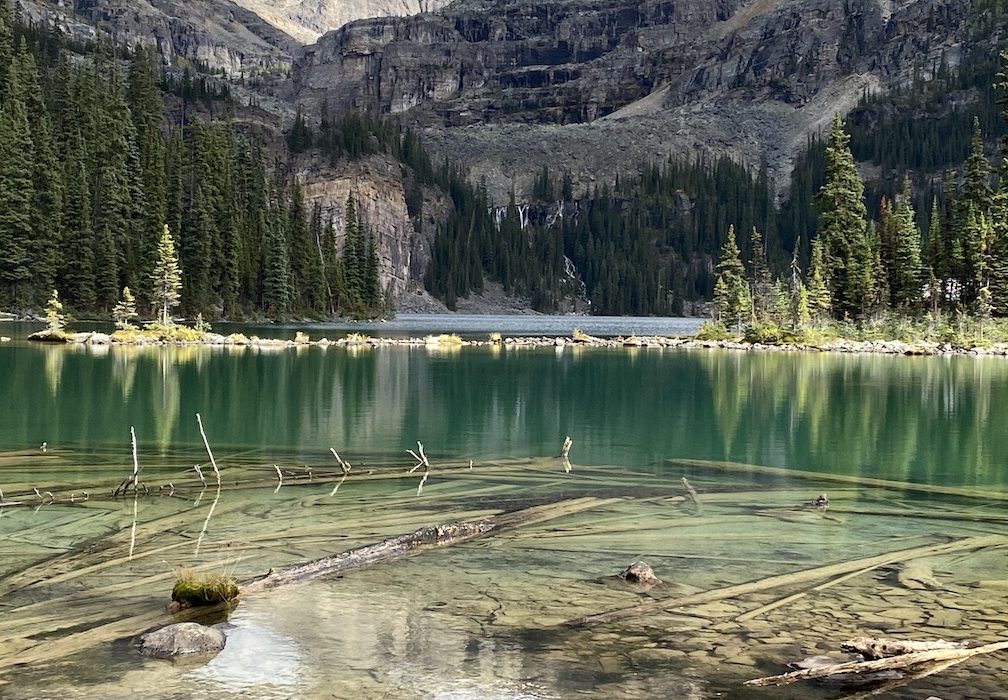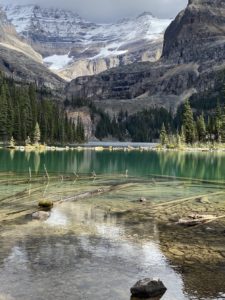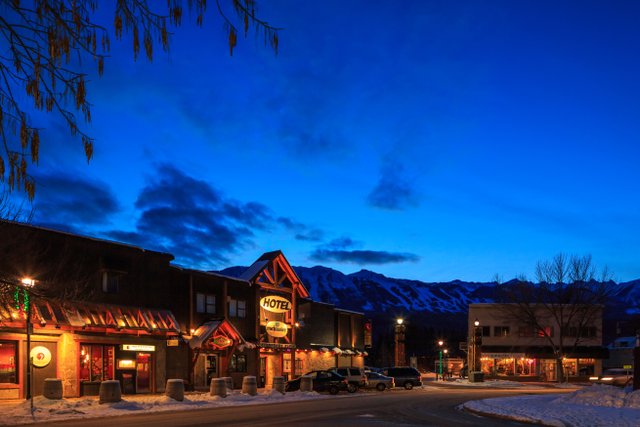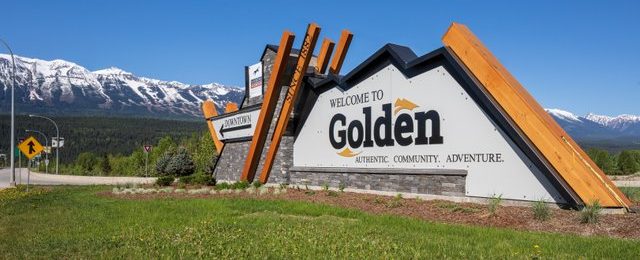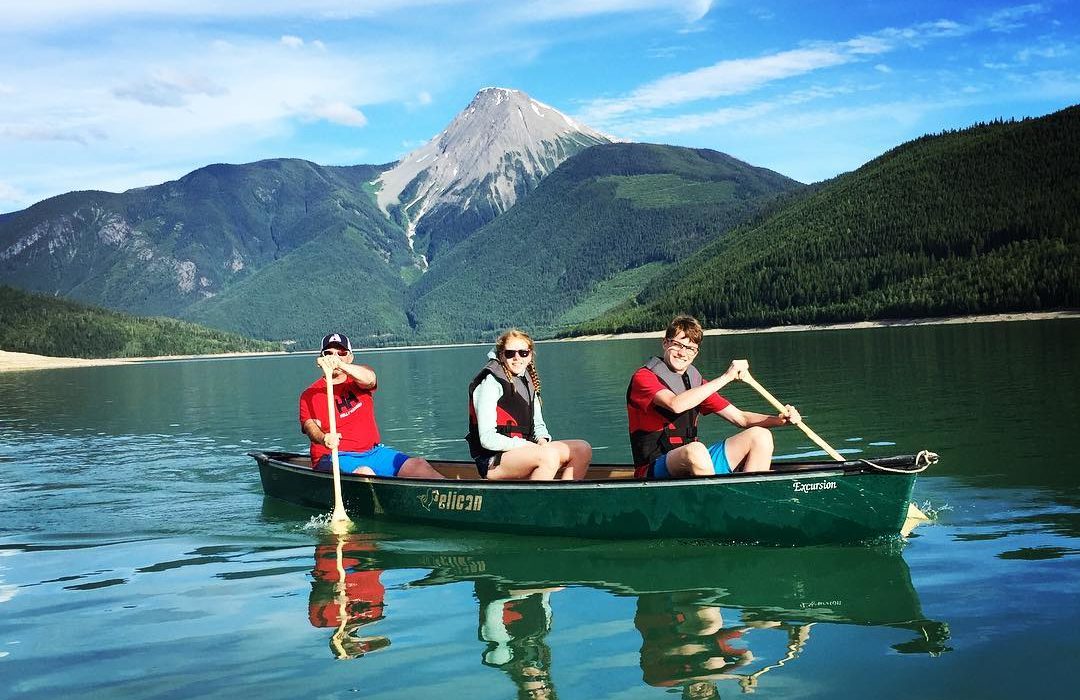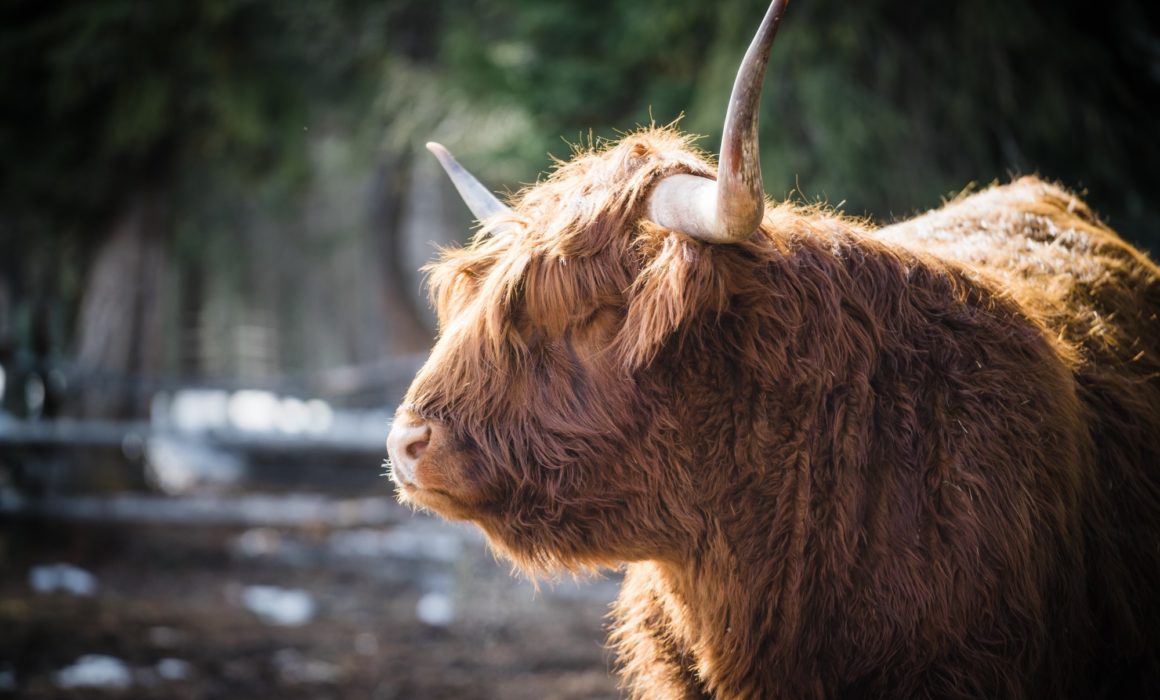The Swiss Guides in Canada
It’s impossible to capture all the stories about the Swiss Guides in Canada. But I hope this blog helps you appreciate the role they played in the evolution of mountain culture and also tourism in the Rockies.
History behind the Swiss Guides in Canada
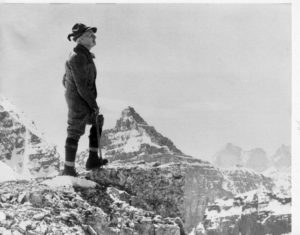
Since 1867 the ‘new’ Canada was determined to construct a railway that would connect West and East. To capitalize on growing tourism and attract wealthy guests, Canadian Pacific’s (CPR) general manager William Cornelius Van Horse proposed building hotels along the route through the Rockies and Selkirk Mountains to the West – the most well known was the Banff Springs, built in 1888. A small chalet on the shores of Lake Louise in 1890 led to the much less attractive Chateau Lake Louise of today. He said “Since we can’t export the scenery we shall have to import the tourists”. Their tourism business quickly succeeded in attracting European and American mountaineers. With no guides everyone thought there was an accident waiting to happen. Indeed in 1896 Philip Stanley Abbot feel to his death from Mount Lefroy.
A campaign to encourage the railway to hire full time professional guides was initiated – one letter to CPR recommending Swiss Guides.
The First Swiss Guides in Canada
In 1898 CPR used the Thomas Cook company to help locate Swiss Guides interested in coming to Canada for a season. Contracts were signed and in 1899, Eduard Feuz Sr. and Christian Haesler came to serve as mountain guides. In the early 20th century they were joined by brothers Ed, Ernst and Walter Feuz, Christian Haesler Jr., Rudolph Aemmer and Christian Bohren. Between 1899 and 1954 there were a total of 35 Swiss guides who provided the expertise for thousands of climbs and the safe ascents of many peaks – with the admirable record of having not a single fatality. These ‘bergfuhrers’, also became tourist attractions in their own right, once called “sturdy, picturesque fellows”.
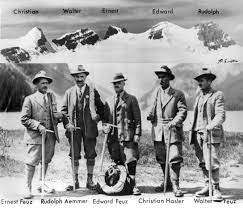
By 1925, CPR’s 35 Swiss guides had led more than 250 first ascents in the Rocky and Selkirk Mountains. Many Canadian mountains are named in honour of the Swiss Guides.
Creating a Mountain Culture
For two generations these guides took hotel guests on hikes and climbs in the Rockies and Selkirks. These quiet, competent professionals taught not only tourists but Canadians a respect for their mountains and generated an enthusiasm for climbing and hiking that is a huge part of the Canadian culture we know today. It was the Swiss guides who provided connections to our compelling yet rugged landscape.
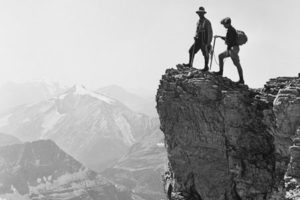
Winter Work for the Swiss Guides
There was plenty of summer mountaineering work but winter was more problematic. As climbing in the winter was not yet common, the guides mostly worked as caretakers for the CPR hotels, clearing snow from roofs. Beginning in the 1920s, they also found employment by ushering Hollywood film producers and their crews around the spectacular scenery of Lake Louise and Banff. Eventually, guides such as Rudolph Aemmer, Edmond Petrig and Bruno Engler made careers as stuntmen and supporting actors, playing next to stars such as John Barrymore and Marilyn Monroe.
Swiss Families moving to Golden
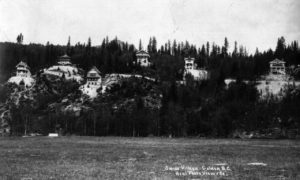
Recognising that working in Canada whilst their families remained in Switzerland was not ideal, the CPR management constructed permanent homes for the Swiss guides and their families. In 1912 the Edelweiss Village in Golden was complete with six chalets. Apparently the Swiss Guides thought they looked more like Chinese pagodas than Swiss homes. Built on a bench above the railway tracks, 2km west of Golden they were too far from town to be convenient for most wives and children and many moved away. Apparently they were terribly built, boiling hot in summer and freezing cold in winter. The somewhat poor design is also apparent in the incorrect inscription of the house doors. Instead of saying “Willkommen”, meaning welcome, the inscription said “Lebe Wohl”, meaning “farewell”. Most of the original buildings are in decline but one of the houses has been maintained as it was when occupied by the Feuz family.
The Final CPR Swiss Guides
The Great Depression and World War II had a devastating effect on mountain tourism. In 1950, the CPR hired Edmund Petrig and Walter Perren, its last two Swiss guides. When their contracts expired in 1954, it brought to an end the Golden Era of Swiss guides after 55 years. Despite the end of this Golden Era, there were new generations of Swiss guides to follow.
A New Generation of Swiss Guides
Guides such as Bruno Engler, Walter Perren, and Hans Schwarz were about to continue the legacy of their fellow Swiss. Part of the Feuz legacy continued with Syd Feuz, the son of Walter Feuz. Born in Golden in 1922 Syd was the first Canadian-Swiss guide and he grew up in the Swiss Edelweiss Village.
The 1960s and 1970s saw the arrival of more Swiss mountaineers who were Swiss certified mountain guides. Many such as Ruedi Gertsch also had their ski instructor diploma. This expertise was crucial for the development of skiing and hili-skiing in Canada.
Things to thank the Swiss Guides for
Alpine Club of Canada
The Swiss Guiding community helped stimulate creation of the Alpine Club of Canada (ACC) The annual ACC camps enabled hundreds of middle-class Canadians, who could not have otherwise afforded the services of professional mountain guides, to discover the adventures of climbing.
The Birth of Skiing and Heli-skiing
![]()
![]()
There is no clear answer to the question who influenced the birth of skiing most in Canada’s west. Some say Swede Gus Johnson, some argue Austrian Conrad Kain. Others say it was the Swiss guides that stayed in Rogers Pass and Lake Louise for the winter. Whenever they could, they skied. Local children soon recognized the fun in this new sport. In the 1920s and 1930s, the ski community in western Canada started to grow. Banff and the lodges of Assiniboine and Skoki gained a reputation among skiers.
For mountain guides, helicopter skiing was the perfect option for a year–round job. The helicopter skiing business in western Canada was initiated by Austrian mountain guide Hans Gmoser. In 1959, he formed a small company named Rocky Mountain Guides Limited that eventually became Canadian Mountain Holidays (CMH). Gmoser first offered commercial heli-skiing in the Bugaboos in 1965. Rapidly, the number of guests increased and so did the demand for experienced mountain guides. As there were few trained Canadian mountain guides who were expert skiers, a large number of Swiss and Austrian guides came to work for CMH.
Especially in the early CMH years, Gmoser hired some influential guides from Switzerland who in a good humorous sense were otherwise known as the “Swiss Mafia”. In addition to being Swiss certified mountain guides, some of them brought years of experience as ski racers with them and others were qualified ski instructors: Ruedi Gertsch, Peter Schlunegger, Sepp Renner and Herb Bleuer. Ruedi Gertsch started his own successful heli-skiing businesses, Purcell Helisiking in Golden. Going full circle Purcell was bought by CMH in 2021.
Mountain Rescue Training
After his contract with CPR ended in the autumn of 1954, Walter Perren stayed in Banff with his family. By February 1955, he received an offer to work for the Canadian National Parks Service. Under Perren, mountain rescue as an integral component of the warden function had begun. Eventually, he became the Chief Warden of Mountaineering Services. He pioneered the use of the helicopter as an aid for transport in rescues and instituted the technical rope and cable systems that form the basis of today’s system.
Avalanche Control
The demand for avalanche control was moderate until fatalities in the early 70’s. Suddenly, mining, railway, and hydro companies as well as highway departments asked for avalanche consulting and oversight. Ski resorts and heli-skiing companies also started to look into avalanche risk management. The person who greatly influenced today’s strong Canadian avalanche safety system was Swiss Peter Schaerer. He developed all the background knowledge in avalanche forecasting and control for this country and set up professional avalanche training programs that now are internationally recognized.
Association of Canadian Mountain Guides (ACMG)
In the second half of the 20th century, guide exams were conducted by Swiss guide Walter Perren, Because of constraints on his time, he proposed the the ACC and Parks Canada formally undertake responsibilities for guide training and certification. Following this suggestion, the Association of Canadian Mountain Guides (ACMG) was founded in 1963.
Museums and Archives
Whilst visiting Golden make sure to visit the Golden Museum. They have a wonderful archive of photos and articles about the history of the Swiss Guides in Golden.
If you are in Banff please stop at The Whyte Museum which has an extensive photographic collection in its archives.

